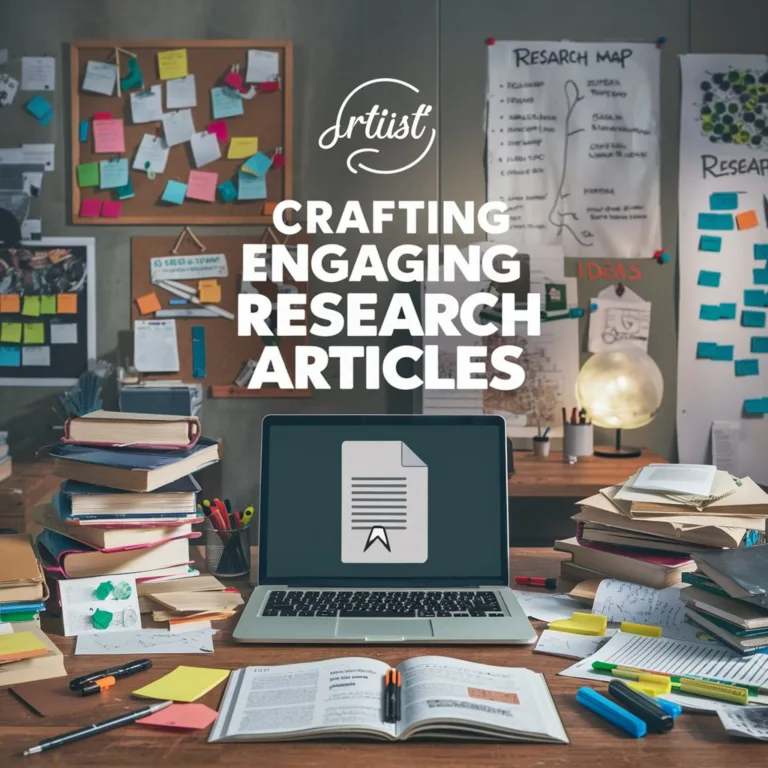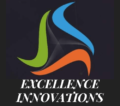Crafting engaging research articles is an art that requires precision, expertise, and a sprinkle of creativity. Whether you’re an academic researcher or a content writer looking to deliver informative and captivating articles, mastering this art can have a profound impact on your reader engagement and overall success. In this comprehensive guide, we will take you through the step-by-step process of creating research articles that not only rank high on search engines but also capture the attention and interest of your target audience.
From choosing the right topic and conducting thorough research to structuring your article and incorporating persuasive language, we will provide you with the tools and techniques to elevate your writing to the next level. We will also explore strategies for optimizing your articles for search engines, ensuring that your hard work gets noticed by the right audience.
Join us as we unravel the secrets of crafting engaging research articles. Whether you’re a seasoned writer or just starting out, this guide will equip you with the skills you need to make your mark in the world of research writing.
Table of Contents
ToggleUnderstanding your target audience
To craft an engaging research article, it is essential to understand your target audience. Consider who will be reading your article and what they hope to gain from it. Are you writing for fellow researchers, students, or a general audience? Understanding their level of expertise, interests, and expectations will help you tailor your writing style and content accordingly.
Additionally, take into account the demographic characteristics of your audience, such as age, educational background, and professional interests. This will enable you to use appropriate language and terminology that resonates with them. By connecting with your audience on a personal level, you can maintain their interest and ensure they find value in your research article.
When writing for a specific audience, it is also crucial to consider their prior knowledge and familiarity with the topic. Avoid using jargon or assuming too much prior knowledge, as this may alienate readers. Instead, strike a balance between providing enough background information for beginners while offering fresh insights for more experienced readers.
Understanding your target audience is the first step towards crafting an engaging research article. By tailoring your writing style and content to meet their needs, you can create a connection that keeps readers captivated throughout.

Choosing a captivating research topic
The choice of a captivating research topic is vital in capturing the interest of your audience. A well-selected topic not only demonstrates your expertise and passion but also ensures that your research article stands out from the sea of similar articles.
When selecting a research topic, consider the following factors:
- Relevance: Choose a topic that is relevant to your field of study or the interests of your target audience. It should address current issues or gaps in knowledge, providing new insights or solutions.
- Uniqueness: Aim for a topic that is unique or offers a fresh perspective on existing research. Avoid topics that have been extensively covered unless you have a unique angle to explore.
- Feasibility: Assess the feasibility of your chosen topic in terms of available resources, time constraints, and access to necessary data or information. Ensure that the topic is manageable within the scope of your research.
- Personal interest: Select a topic that genuinely interests you. Your passion and enthusiasm will shine through in your writing, making it more engaging for readers.
Once you have chosen a captivating research topic, it is essential to refine it into a specific research question that will guide your study. The next section will delve into the process of crafting a compelling research question.
Book your article writer
Conducting comprehensive literature reviews
Before diving into your research, conducting a comprehensive literature review is crucial. A literature review helps you understand the existing body of knowledge on your chosen topic, identify research gaps, and position your study within the broader academic context.
To conduct an effective literature review, follow these steps:
- Identify relevant databases: Start by identifying the key databases or search engines in your field of study. Examples include PubMed for medical research, IEEE Xplore for engineering, and JSTOR for humanities and social sciences.
- Develop search terms: Brainstorm a list of search terms related to your research topic. Think of different variations, synonyms, and related concepts. This will expand the pool of relevant articles you discover.
- Refine your search: Use the identified databases and search terms to conduct your literature search. Refine your search by applying filters such as publication date, study design, or geographical focus, depending on your research requirements.
- Evaluate and select relevant articles: Skim through the search results and evaluate the relevance of each article based on the title, abstract, and keywords. Select articles that align with your research objectives and discard irrelevant ones.
- Read and summarize selected articles: Read the selected articles thoroughly, taking notes on key findings, methodologies, and gaps in the existing literature. Summarize each article in a concise manner, highlighting the main points and their relevance to your research.
- Synthesize the literature: Analyze the summarized articles to identify common themes, conflicting findings, or areas of consensus. This synthesis will help you develop a theoretical framework for your research and identify research gaps that you can address.
Conducting a comprehensive literature review sets the foundation for your research article. By understanding the existing knowledge on your topic, you can position your study within the academic discourse and contribute valuable insights to your field.
Crafting a compelling research question
A compelling research question forms the backbone of your research article. It guides your study, defines its scope, and provides a clear direction for your research findings. A well-crafted research question is concise, specific, and relevant to both your research objectives and the interests of your target audience.
To craft a compelling research question:
- Identify the main variables: Determine the main variables or concepts that your research will investigate. These variables should be measurable, observable, and relevant to your research objectives.
- Consider the scope: Define the scope of your research question by specifying the population, geographical area, time frame, or other relevant contextual factors. This will ensure that your research question is focused and manageable.
- Formulate a clear question: Transform your research objectives into a clear and concise question that captures the essence of your study. Avoid vague or ambiguous language and ensure that your question is answerable through empirical research.
- Align with existing literature: Ensure that your research question addresses existing gaps or builds upon previous research. This will position your study within the academic discourse and demonstrate its relevance and novelty.
A compelling research question not only guides your research but also captures the interest of your audience. It should be thought-provoking, addressing a significant issue or problem that resonates with readers. By crafting a compelling research question, you set the stage for a captivating research article.

Designing a rigorous research methodology
A rigorous research methodology is essential for producing credible and reliable results. It provides a systematic framework for collecting, analyzing, and interpreting data, ensuring that your research findings are robust and valid.
When designing your research methodology, consider the following elements:
- Research design: Choose an appropriate research design based on your research question and objectives. Common research designs include experimental, observational, qualitative, and quantitative approaches. Justify your choice of design based on the nature of your research.
- Sampling strategy: Determine the sampling strategy that best suits your research objectives. Whether it is random sampling, convenience sampling, or purposive sampling, ensure that your sample represents the population of interest and allows for generalization of findings.
- Data collection methods: Select the most appropriate data collection methods to gather the required information. This may include surveys, interviews, experiments, observations, or document analysis. Consider the advantages and limitations of each method and ensure that they align with your research question.
- Data analysis techniques: Choose the appropriate data analysis techniques to analyze your collected data. This may involve statistical analysis, thematic analysis, content analysis, or other qualitative or quantitative methods. Select techniques that allow you to answer your research question and provide meaningful insights.
- Ethical considerations: Pay attention to ethical considerations when conducting research involving human subjects or sensitive data. Obtain informed consent, protect participants’ privacy, and ensure that your research follows ethical guidelines and regulations.
Designing a rigorous research methodology is crucial for producing reliable research findings. A well-designed methodology ensures that your research is valid, replicable, and contributes to the body of knowledge in your field.
Collecting and analyzing data effectively
Collecting and analyzing data effectively is a critical step in crafting an engaging research article. It involves transforming raw data into meaningful insights that support your research objectives and provide value to your audience.
When collecting data, follow these guidelines:
- Ensure data quality: Pay attention to data quality by using standardized data collection tools, conducting pilot studies, and ensuring data accuracy and completeness. This will enhance the reliability and validity of your findings.
- Organize and categorize data: Organize your data in a systematic and structured manner to facilitate analysis. Develop a coding system or data management plan that allows easy retrieval and categorization of data.
- Analyze data systematically: Apply appropriate data analysis techniques based on your research design and objectives. Use statistical software or qualitative analysis tools to analyze your data accurately and efficiently.
- Interpret and validate findings: Interpret your data in relation to your research question and objectives. Validate your findings by comparing them with existing literature, consulting experts in the field, or conducting member checks with participants.
- Communicate findings effectively: Present your findings in a clear and concise manner, using tables, charts, or graphs to enhance understanding. Use appropriate language and avoid jargon or technical terms that may confuse or alienate your readers.
Collecting and analyzing data effectively is crucial for producing meaningful research findings. By following best practices in data collection and analysis, you can ensure that your research article presents robust and valuable insights to your audience.
Presenting findings in an engaging manner
Presenting your research findings in an engaging manner is essential to captivate your audience and convey the significance of your research. A well-structured and visually appealing presentation enhances reader comprehension and encourages further exploration of your article.
Consider the following strategies for presenting your findings in an engaging manner:
- Structure your article: Organize your research article in a logical and coherent structure. Start with an introduction that provides background information and context for your study. Follow this with the methods section, results section, and discussion section, ensuring a smooth flow of ideas.
- Use clear and concise language: Use clear and concise language to convey your findings. Avoid unnecessary jargon or technical terms that may hinder reader comprehension. Explain complex concepts or statistical analyses in simple terms that can be easily understood by your target audience.
- Incorporate visuals: Include visuals such as tables, charts, or graphs to present your data in a visually appealing and accessible format. Visuals not only enhance reader comprehension but also add visual interest to your article.
- Tell a story: Weave your findings into a compelling narrative that engages readers and highlights the significance of your research. Use storytelling techniques to create a connection with your audience and make your research more relatable.
- Highlight practical implications: Discuss the practical implications of your findings and their relevance to real-world applications. Demonstrate how your research contributes to solving a problem or advancing knowledge in your field. This will make your research more meaningful and relatable to readers.
Presenting your findings in an engaging manner is crucial for capturing the interest of your audience. By using clear language, incorporating visuals, and telling a compelling story, you can effectively communicate the significance of your research and keep readers engaged throughout your article.
Incorporating visuals and multimedia elements
Incorporating visuals and multimedia elements into your research article can significantly enhance reader engagement and comprehension. Visuals not only break up the text and add visual interest but also help convey complex information in a more accessible manner.
Consider the following tips for incorporating visuals and multimedia elements:
- Use relevant images: Include relevant images or photographs that illustrate key concepts or findings. Ensure that the images are of high quality and properly credited to avoid copyright issues.
- Create informative infographics: Convert complex data or statistical analyses into visually appealing infographics. Infographics provide a concise and visually engaging way to present information, making it easier for readers to understand and retain key findings.
- Embed videos or audio clips: If relevant, consider embedding videos or audio clips that provide additional context or demonstrations of your research. This can be particularly useful for research articles in fields such as medicine, engineering, or social sciences.
- Utilize interactive elements: Explore the use of interactive elements such as clickable maps, timelines, or interactive graphs. These elements allow readers to explore the data or information at their own pace, enhancing engagement and interactivity.
- Optimize for mobile devices: Ensure that your visuals and multimedia elements are optimized for viewing on mobile devices. With the increasing use of smartphones and tablets, it is essential to provide a seamless reading experience across different devices.
Incorporating visuals and multimedia elements can transform your research article into a visually engaging and interactive experience for readers. By leveraging the power of visuals and multimedia, you can effectively communicate complex information and enhance reader engagement.
Conclusion: Tips for writing engaging research articles
Crafting engaging research articles is an art that requires careful planning, attention to detail, and a deep understanding of your target audience. To summarize, here are some key tips for writing engaging research articles:
- Understand your target audience: Tailor your writing style and content to meet the needs and interests of your target audience. Connect with them on a personal level to maintain their interest throughout your article.
- Choose a captivating research topic: Select a topic that is relevant, unique, and personally interesting. Ensure that your topic addresses gaps in existing research and offers fresh insights.
- Conduct comprehensive literature reviews: Conduct thorough literature reviews to understand the existing knowledge on your topic and identify research gaps. Position your study within the academic discourse and contribute valuable insights to your field.
- Craft a compelling research question: Develop a clear and concise research question that guides your study and captures the interest of your audience. Ensure that your question addresses a significant issue or problem.
- Design a rigorous research methodology: Design a research methodology that is appropriate for your research question and objectives. Pay attention to research design, sampling strategy, data collection methods, data analysis techniques, and ethical considerations.

Born with a relentless thirst for knowledge, I ventured into academia, mastering the art of PHD thesis and dissertation writing. Fuelled by curiosity, I embraced digital marketing, deciphering its nuances to become an expert in SEO, content strategies, and social media management. Alongside, I delved into the intricacies of nursing assignments, leveraging my multidisciplinary insights to assist students. Each endeavor shaped my journey, blending scholarly pursuits with practical applications.
